Jaguar’s new XJR excels in design, dynamics and comfort
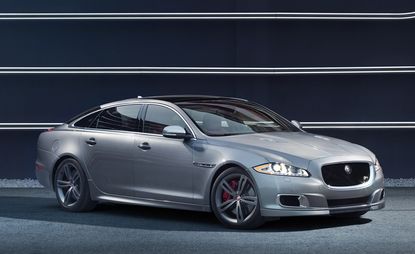
To make a premium automobile, one follows a long-established recipe. Take one large saloon car, sizeable enough to accommodate styling that's fluid, expansive and elegant. Add wood, leather and a healthy dash of techno trickery. Ensure that the bits below the bonnet throw out power to propel the above ensemble to speeds well in excess of common sense. And finally, ensure that the badge on said bonnet is suitably prestigious enough to generate just the right kind of subtle envy.
Jaguar's XJ is the company's flagship, and it fulfils all of the above criteria. Introduced back in 2009, it's most notable for being the car that broke the mould, finally ending the firm's four decade-long reliance on a graceful but rather tired design language. Instead of aping the past, the new car was bold, fluid and graceful, with more than a hint of attitude in the detailing. You either liked it, or you didn't; the days of serene, graceful, dependable beauty had passed. Either way, it was still a brilliant car to drive and be driven in.
Over time the XJ has evolved, as every production car does, with each year seeing nips, tucks and other improvements. The very latest iteration is the XJR, the supercharged flagship of flagships that splices the comfortable accommodation with the company's most explosive powertrain. Nestling under the XJR's expansive bodywork is a supercharged V8 (still a potent combination of words), putting out 542bhp.
This is a lot, by any standards, and it gives the aluminium-structured XJ scalding performance, more than enough to make it a twitchy prospect on slippery roads but a pure delight in the right hands and the right conditions. The acceleration is so extreme that is has automotive scribes reaching into their grab bags of motoring metaphors, looking for the right way of describing the feeling of something so sizeable move so quickly, while the car steers and stops in a way that belies its size.
Since the XJ originally arrived, Jaguar has done an excellent job of reminding the world that it can excel in every department; design, dynamics and comfort. The new F-Type is the company's most potent sports car in a generation but although the XJR outpaces it (on paper at least), in the real world this larger car is best treated in ways that flatter its dual character; a devastatingly swift machine that is also one of the most comfortable and refined ways of travelling, in either front or rear compartment.

The supercharged flagship of flagships splices comfortable accommodation with the company's most explosive powertrain
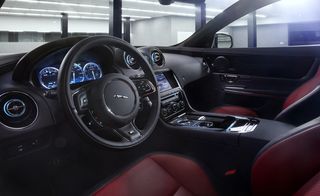
Not only a devastatingly swift machine, the XJR is also one of the most comfortable and refined ways of travelling, in either the front or rear compartment

Nestling under the XJR's expansive aluminium bodywork is a supercharged V8, putting out 542bhp
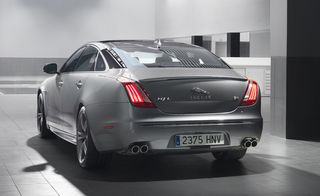
This is a lot, by any standards, and it gives the aluminium-structured XJ scalding performance, more than enough to make it a twitchy prospect on slippery roads but a pure delight in the right hands and the right conditions
Wallpaper* Newsletter
Receive our daily digest of inspiration, escapism and design stories from around the world direct to your inbox
Jonathan Bell has written for Wallpaper* magazine since 1999, covering everything from architecture and transport design to books, tech and graphic design. He is now the magazine’s Transport and Technology Editor. Jonathan has written and edited 15 books, including Concept Car Design, 21st Century House, and The New Modern House. He is also the host of Wallpaper’s first podcast.
-
 Ikea introduces its first gaming furniture collection
Ikea introduces its first gaming furniture collectionBrännboll is the first Ikea gaming furniture collection, unveiled during Milan Design Week 2024 and designed to swiftly transform a domestic space into a gamer’s paradise
By Jasper Spires Published
-
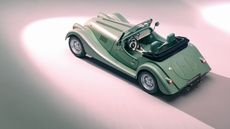 Morgan take their classic roadster and give it subtle but significant tweaks for 2024
Morgan take their classic roadster and give it subtle but significant tweaks for 2024New details and features give the compulsive Morgan Plus Four an even more pared back silhouette and driving ability
By Jonathan Bell Published
-
 Wallpaper* Class of '24 exhibition now open at Triennale Milano
Wallpaper* Class of '24 exhibition now open at Triennale MilanoWallpaper* Class of '24 exhibition at Triennale spotlights international emerging talent in furniture and product design, with the support of AHEC and SNOW (until 21 April 2024)
By Rosa Bertoli Published
-
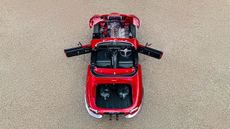 Helm’s meticulously re-imagined Jaguar E-Type features a finely crafted interior by Bill Amberg
Helm’s meticulously re-imagined Jaguar E-Type features a finely crafted interior by Bill AmbergHelm transforms the legendary E-Type into a thoroughly modern machine, upgrading every aspect of Jaguar’s pioneering sports car to an exacting brief
By Jonathan Bell Published
-
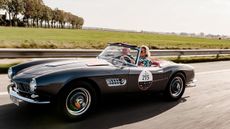 Zoute Grand Prix is a car fest like no other at a pristine Belgian beachside town
Zoute Grand Prix is a car fest like no other at a pristine Belgian beachside townAmy Serafin takes to the well-heeled streets of Knokke-Heist to experience the Zoute Grand Prix, its annual cavalcade of classic car-related events, from a rally to an auction
By Amy Serafin Published
-
 Jaguar F-Type 75 special edition is the last of its kind as the marque hints at a radical future
Jaguar F-Type 75 special edition is the last of its kind as the marque hints at a radical futureThe Jaguar F-Type 75 will be the last ever V8-powered Jaguar; is it also the end of conventional sports cars for this legendary British marque?
By Jonathan Bell Published
-
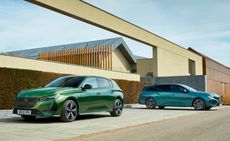 Peugeot’s sparky 308 gets hybrid power and handsome lines
Peugeot’s sparky 308 gets hybrid power and handsome linesThe Peugeot 308 proves that mass-market design needn’t be dull, blending hybrid power with sharp lines and excellent detailing
By Jonathan Bell Published
-
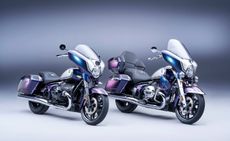 BMW Motorrad brings out the big guns for its newest cruisers
BMW Motorrad brings out the big guns for its newest cruisersBMW Motorrad R 18 Bagger and Transcontinental set the tone for high-voltage cruising with a brand collaboration with speaker specialist Marshall
By George Chapman Last updated
-
 Dacia’s new Manifesto concept is a true outdoor utility vehicle
Dacia’s new Manifesto concept is a true outdoor utility vehicleUtilitarian auto brand Dacia sets a bold new agenda with its Manifesto, a concept car pitched at the active outdoor market
By Jonathan Bell Last updated
-
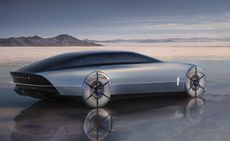 The sun sets on traditional supercars at California’s Monterey Car Week
The sun sets on traditional supercars at California’s Monterey Car WeekMonterey Car Week, the world’s most prestigious car gathering, is showcasing ever-more extravagant special editions, coachbuilt cars and all-new electric concepts. Here are seven key machines from 2022
By Rory FH Smith Last updated
-
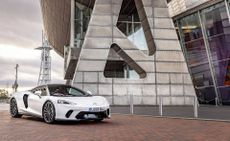 Is McLaren’s GT a sports car, a tourer, or the best of both?
Is McLaren’s GT a sports car, a tourer, or the best of both?The McLaren GT is a capable all-rounder dressed up in svelte supercar clothes. It might also be the last of its type
By Jonathan Bell Last updated